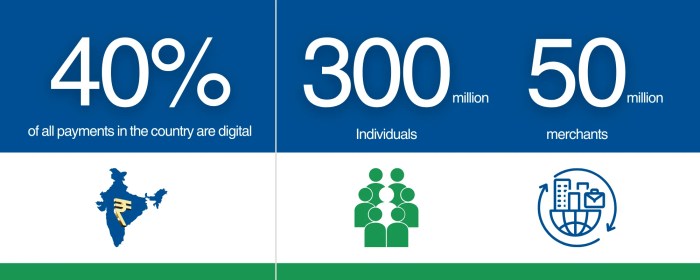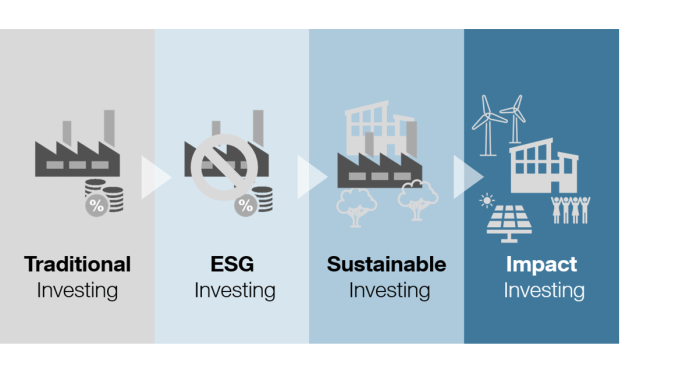The Role of Financial Transparency in International Business Ethics is paramount in fostering trust and accountability within the global marketplace. This exploration delves into the multifaceted nature of financial transparency, examining its definition, ethical implications, and the influence of international standards and regulations. We will consider the crucial role of stakeholder engagement and the transformative potential of technology in shaping a more ethical and transparent future for international business.
The increasing interconnectedness of global economies necessitates a robust framework for ethical conduct. This paper analyzes how varying levels of financial transparency across nations impact corporate behavior, investor confidence, and the overall health of international trade. We will investigate the challenges of enforcing consistent standards in diverse legal and cultural contexts, and explore effective strategies for promoting greater accountability and ethical practices among multinational corporations.
Defining Financial Transparency in International Business
Financial transparency in international business refers to the degree to which a multinational corporation (MNC) openly and honestly discloses its financial information to stakeholders. This includes not only shareholders but also governments, creditors, employees, customers, and the wider public. A high level of transparency fosters trust, accountability, and responsible business practices, while opacity can breed suspicion, corruption, and ultimately, damage to a company’s reputation and bottom line.
Financial transparency is multifaceted and encompasses various aspects of a company’s financial operations. It is not simply about meeting minimum legal requirements but also about proactively communicating financial information in a clear, accessible, and timely manner.
Facets of Financial Transparency, The Role of Financial Transparency in International Business Ethics
Financial transparency in international business involves several key elements. Accurate and consistent accounting practices are fundamental, ensuring that financial records are reliable and reflect the true financial position of the company. This requires adherence to globally recognized accounting standards, such as those issued by the International Accounting Standards Board (IASB). Further, robust reporting standards, including regular financial statements (balance sheets, income statements, cash flow statements), are crucial for providing stakeholders with a comprehensive view of the company’s performance. Finally, transparent disclosure requirements mandate the publication of relevant financial information, including details about significant transactions, risks, and uncertainties, beyond the minimum legally mandated information. This proactive disclosure builds confidence and strengthens stakeholder relationships.
Comparative Levels of Financial Transparency Across Countries and Regions
The level of financial transparency varies significantly across countries and regions. Developed economies, generally, have stricter regulations and enforcement mechanisms, leading to higher levels of transparency. For example, companies listed on stock exchanges in the United States or the European Union are subject to rigorous reporting requirements and independent audits. In contrast, developing countries often have weaker regulatory frameworks and enforcement, resulting in lower levels of transparency. This difference can be attributed to several factors, including differences in legal systems, accounting standards, and enforcement capabilities. Furthermore, cultural norms and business practices also influence the level of transparency in a given region. For instance, some cultures may prioritize relationships and trust over formal disclosure, leading to less transparent practices.
Examples of Transparent and Opaque Financial Practices
The following table illustrates examples of transparent and opaque financial practices in international business.
| Company | Industry | Financial Practice | Transparency Level |
|---|---|---|---|
| Unilever | Consumer Goods | Publishes detailed sustainability reports, including supply chain transparency and social impact metrics. | High |
| Microsoft | Technology | Provides comprehensive financial reports that adhere to US GAAP and undergoes regular independent audits. | High |
| (Hypothetical Company A) | Extractives | Fails to disclose payments made to government officials in resource-rich countries. | Low |
| (Hypothetical Company B) | Construction | Uses complex accounting structures to obscure the true financial performance of projects. | Low |
Note: Hypothetical companies A and B represent examples of opaque practices and are not intended to reflect actual companies. Many companies operate with high levels of transparency. The extractives industry is frequently cited as one where opacity is a concern due to the potential for corruption and lack of readily available information on payments to governments.
Ethical Implications of Financial Transparency (or Lack Thereof)

Financial transparency, or the lack thereof, significantly impacts the ethical landscape of international business. Multinational corporations (MNCs) operate within a complex web of global regulations, cultural norms, and stakeholder expectations, making ethical considerations paramount. A commitment to transparent financial reporting is not merely a legal requirement; it’s a cornerstone of responsible corporate citizenship and sustainable business practices.
The ethical obligations of multinational corporations regarding financial reporting and disclosure extend beyond simple compliance with local laws. They encompass a broader commitment to honesty, fairness, and accountability to all stakeholders, including shareholders, employees, customers, suppliers, and the communities in which they operate. This includes providing accurate, complete, and timely information about their financial performance, risks, and governance structures. Transparency fosters trust, enabling informed decision-making by investors and other stakeholders, and ultimately contributing to a more stable and equitable global economy.
Consequences of Financial Opacity
Financial opacity, the deliberate concealment or obfuscation of financial information, carries severe ethical and practical consequences. Reputational damage is a significant risk. When companies are perceived as lacking transparency, it erodes public trust, leading to boycotts, reduced consumer confidence, and difficulty attracting and retaining talent. Legal repercussions can be substantial, ranging from fines and penalties to criminal charges for fraud and other financial misconduct. Investors, wary of hidden risks and potential losses, lose confidence, impacting stock prices and access to capital. The lack of transparency can also create an uneven playing field, disadvantaging competitors who operate ethically and transparently. For instance, a company concealing losses might gain an unfair competitive advantage by undercutting prices, potentially driving ethical competitors out of the market.
Ethical Dilemmas in Weak Regulatory Environments
Businesses operating in countries with weak regulatory frameworks face unique ethical dilemmas. The absence of robust accounting standards and enforcement mechanisms creates opportunities for unethical behavior, including financial manipulation and tax evasion. Companies may face pressure to compromise their ethical principles to remain competitive, potentially engaging in practices that would be unacceptable in countries with stronger regulatory oversight. This can create a moral conflict for businesses committed to ethical conduct, forcing them to choose between maintaining their integrity and risking their competitiveness. A company might, for example, be tempted to use informal, off-the-books payments to expedite permits or navigate bureaucratic hurdles, even if such actions are ethically questionable and potentially illegal.
Financial Transparency and Corruption
A lack of financial transparency creates fertile ground for corruption and bribery. When financial dealings are opaque, it becomes easier to conceal illicit payments, embezzlement, and other forms of corruption. This can lead to a misallocation of resources, undermining economic development and hindering good governance. For example, a company might use shell corporations or complex financial instruments to disguise bribes paid to government officials to secure favorable contracts or avoid paying taxes. This not only undermines the rule of law but also creates an unfair advantage over competitors who adhere to ethical practices. The lack of transparency also makes it difficult to detect and prosecute such crimes, allowing corruption to flourish. The resulting loss of public trust can destabilize entire economies and undermine social cohesion.
The Role of International Standards and Regulations
International standards and regulations play a crucial role in fostering financial transparency within the global business landscape. A consistent and universally accepted framework is essential for investors, stakeholders, and regulatory bodies to assess the financial health and ethical conduct of multinational corporations operating across diverse jurisdictions. The absence of such standards can lead to inconsistencies in reporting, hindering accurate comparisons and increasing the risk of fraud or manipulation.
International Accounting Standards (IFRS) and their impact on financial transparency are significant. Developed by the International Accounting Standards Board (IASB), IFRS aims to create a single set of high-quality, globally accepted accounting standards. Adoption of IFRS enhances comparability of financial statements across different countries, making it easier for investors to assess risk and make informed decisions. This increased comparability directly contributes to greater financial transparency, promoting accountability and reducing information asymmetry. However, the full impact depends on consistent and rigorous enforcement, which presents its own set of challenges.
Effectiveness of Different Regulatory Frameworks
A comparison of various regulatory frameworks reveals varying degrees of success in promoting global financial transparency. While IFRS provides a strong foundation, the effectiveness of its implementation differs significantly across countries. Some jurisdictions have fully adopted IFRS and enforce it rigorously, leading to high levels of transparency. Others may have adopted IFRS but lack the resources or political will for effective enforcement, resulting in inconsistencies and limitations in transparency. Additionally, different legal and cultural contexts can influence the interpretation and application of these standards. For example, a culture with a strong emphasis on relationships over strict adherence to rules may lead to less rigorous application of IFRS. This highlights the importance of not just adopting standards but also ensuring effective enforcement and adaptation to local contexts.
Challenges of Enforcing International Standards
Consider a hypothetical scenario: a multinational corporation operating in both the European Union (EU) and a developing nation in Southeast Asia. The EU has strong regulations and enforcement mechanisms for IFRS compliance, while the Southeast Asian nation has a less developed regulatory environment and weaker enforcement capacity. The corporation might find it easier to manipulate financial reporting in the Southeast Asian nation, due to weaker oversight and potentially different cultural norms around accounting practices. This disparity creates an uneven playing field and undermines the global aim of increased financial transparency. The challenge lies in harmonizing enforcement across vastly different legal and regulatory systems, while respecting the sovereignty of individual nations. International cooperation and capacity building are vital to address this.
Best Practices for Enhancing Financial Transparency
Multinational corporations can proactively enhance their financial transparency by adopting several best practices. These measures aim to build trust with stakeholders and mitigate risks associated with a lack of transparency.
- Implement a robust internal control system: A strong internal control system ensures accurate and reliable financial reporting. This involves clear segregation of duties, regular internal audits, and a commitment to ethical accounting practices.
- Adopt IFRS consistently across all subsidiaries: Maintaining uniform accounting practices globally minimizes inconsistencies and improves the comparability of financial statements.
- Provide clear and concise financial disclosures: Transparency extends beyond simply adhering to standards. Companies should actively communicate their financial performance and risk factors to stakeholders in an accessible manner.
- Engage in regular communication with stakeholders: Open dialogue with investors, creditors, and other stakeholders helps to build trust and address concerns about financial reporting.
- Conduct independent audits: Independent audits provide an external verification of financial statements, enhancing credibility and accountability.
- Promote a culture of ethics and compliance: A strong ethical culture within the organization fosters transparency and discourages unethical behavior.
Stakeholder Engagement and Transparency
Financial transparency isn’t solely a matter of regulatory compliance; it’s a cornerstone of building trust and fostering positive relationships with all stakeholders. Active engagement with investors, employees, consumers, and communities is crucial for driving improvements in corporate governance and ensuring sustainable business practices. This section explores the multifaceted role stakeholders play in demanding and achieving greater financial transparency.
Stakeholder Influence on Financial Transparency
Increased stakeholder engagement significantly impacts corporate financial reporting. Investors, for example, increasingly prioritize Environmental, Social, and Governance (ESG) factors in their investment decisions. This heightened awareness compels companies to enhance their transparency around ESG performance, leading to more comprehensive and detailed reporting. Employees, too, are demanding greater transparency regarding company finances, particularly concerning compensation, benefits, and the overall financial health of the organization. This demand often translates into improved internal communication and more robust employee engagement programs. Consumers, increasingly conscious of ethical sourcing and sustainable practices, are actively seeking information about a company’s financial transparency as an indicator of its ethical behavior. Finally, communities directly impacted by a company’s operations are increasingly vocal in their demand for transparency regarding environmental impact, job creation, and community investment. This pressure from multiple stakeholder groups forces companies to adopt more comprehensive and accountable financial reporting practices.
Methods of Effective Stakeholder Communication
Businesses can employ various strategies to effectively communicate their financial performance and sustainability efforts to diverse stakeholder groups. Clear, concise, and accessible language is paramount, avoiding technical jargon that might alienate non-financial stakeholders. Utilizing multiple communication channels—annual reports, sustainability reports, social media, and dedicated investor relations websites—allows companies to reach a broader audience with tailored messages. Interactive platforms and online dashboards can enhance engagement by providing stakeholders with the ability to access data and information directly. Furthermore, regular dialogue with stakeholder groups through town hall meetings, investor conferences, and community forums facilitates two-way communication and demonstrates a genuine commitment to transparency. Companies should also proactively seek feedback from stakeholders to continuously improve their communication strategies and address any concerns.
Hypothetical Press Release: Enhanced Financial Transparency
FOR IMMEDIATE RELEASE
[Company Name] Commits to Enhanced Financial Transparency
[City, State] – [Date] – [Company Name], a leading provider of [industry], today announced a significant commitment to enhancing its financial transparency. Recognizing the importance of open and honest communication with all stakeholders, the company will implement several key initiatives to improve the accessibility and comprehensiveness of its financial reporting. These initiatives include:
- Publishing quarterly financial reports with increased detail on key performance indicators (KPIs) and ESG metrics.
- Launching an interactive online platform providing stakeholders with real-time access to financial data and sustainability information.
- Conducting regular stakeholder engagement sessions to solicit feedback and address concerns.
- Implementing a robust internal audit process to ensure the accuracy and reliability of financial reporting.
“We believe that enhanced financial transparency is essential for building trust and fostering long-term value creation for all our stakeholders,” said [CEO Name], CEO of [Company Name]. “These initiatives represent a significant step in our ongoing commitment to responsible corporate governance and sustainable business practices. We aim to achieve a 25% increase in stakeholder engagement within the next year, measured by participation in online platforms and feedback surveys.”
You also can understand valuable knowledge by exploring How Cross-Border Mergers Affect Corporate Accounting Practices.
About [Company Name]:
[Brief company description]
Contact:
[Contact Name]
[Contact Email]
[Contact Phone Number]
The Impact of Technology on Financial Transparency
Technological advancements are revolutionizing the landscape of international business, significantly impacting the accuracy and accessibility of financial information. This section explores how technologies like blockchain and artificial intelligence are enhancing transparency, while also acknowledging the challenges and risks associated with their implementation.
The integration of technology offers the potential for unprecedented levels of financial transparency in international business. Improved data accuracy and accessibility are key benefits, leading to more informed decision-making and reduced opportunities for unethical practices.
Enhanced Accuracy and Accessibility of Financial Information through Technology
Blockchain technology, with its immutable ledger system, offers a secure and transparent way to record and track financial transactions. Every transaction is cryptographically secured and visible to all authorized participants, minimizing the risk of manipulation or fraud. This increased transparency allows stakeholders to verify the accuracy of financial information with greater ease and confidence. Artificial intelligence (AI) can further enhance accuracy by automating data analysis and identifying anomalies or inconsistencies that might indicate fraudulent activity. AI-powered systems can sift through vast datasets far more quickly and efficiently than humans, identifying potential red flags that could be missed through manual processes. For example, AI algorithms can detect patterns indicative of money laundering or other financial crimes, alerting authorities and stakeholders to potential issues.
Challenges in Implementing New Technologies for Enhanced Financial Transparency
Despite the potential benefits, implementing new technologies to enhance financial transparency presents significant challenges. The high initial investment costs associated with adopting blockchain or AI systems can be prohibitive for smaller businesses. Furthermore, a lack of standardization and interoperability between different technological systems can hinder the seamless flow of information. The complexity of these technologies also requires specialized expertise for implementation and maintenance, adding to the overall cost and complexity. Resistance to change within organizations and a lack of understanding about the benefits of these technologies can also impede adoption. For instance, a company resistant to adopting blockchain might be hesitant due to the perceived complexity and cost of training staff, resulting in slower integration and reduced transparency.
Potential Risks Associated with Technology in Financial Reporting
The use of technology in financial reporting also introduces potential risks. Data breaches and cybersecurity threats are significant concerns, as sensitive financial information becomes a prime target for malicious actors. A successful cyberattack could compromise the integrity of financial data, leading to inaccurate reporting and potentially causing significant financial losses. Moreover, the reliance on complex algorithms and AI systems can introduce biases or errors that might go undetected, leading to misinterpretations of financial information. For example, a poorly designed AI algorithm might misinterpret legitimate transactions as fraudulent, leading to incorrect reporting and potential legal consequences. The dependence on technology also necessitates robust cybersecurity measures and regular audits to ensure data integrity and system security.
Improving Auditing and Verification of Financial Statements Using Technology
Technology offers innovative solutions for improving the auditing and verification of financial statements. Blockchain’s immutable ledger can provide an auditable trail of all transactions, simplifying the audit process and reducing the time and cost associated with verification. AI-powered audit tools can analyze vast amounts of data to identify potential errors or inconsistencies, enhancing the efficiency and effectiveness of audits. For example, an AI-powered system could cross-reference financial data with other relevant sources, such as supply chain information, to identify potential discrepancies or fraudulent activities. Furthermore, these technologies can help automate the verification of supporting documentation, reducing the risk of human error and improving the overall reliability of financial reporting. This improved auditing process ultimately strengthens investor confidence and enhances the credibility of financial statements.
Closing Notes

In conclusion, the pursuit of financial transparency in international business is not merely a regulatory imperative but a moral obligation. While challenges remain in achieving consistent global standards and navigating the complexities of diverse legal and cultural landscapes, the benefits – enhanced trust, reduced corruption, and improved stakeholder relationships – are undeniable. The integration of technology offers promising avenues for increased accuracy and accessibility of financial information, paving the way for a more ethical and sustainable future for global commerce. Continued dialogue and collaboration among stakeholders are crucial to driving meaningful progress towards a more transparent and accountable international business environment.
Questions and Answers: The Role Of Financial Transparency In International Business Ethics
What are some common obstacles to achieving financial transparency in international business?
Obstacles include differing accounting standards across countries, weak regulatory enforcement in some jurisdictions, a lack of consistent data collection methods, and the deliberate obfuscation of financial information by some companies.
How does financial opacity contribute to corruption?
Lack of transparency allows for hidden transactions, facilitating bribery, embezzlement, and other forms of corruption. The absence of clear financial reporting makes it difficult to detect and prosecute such activities.
What role do whistleblowers play in promoting financial transparency?
Whistleblowers play a critical role by bringing to light instances of financial misconduct. Strong whistleblower protection laws are essential to encourage reporting and deter unethical behavior.






